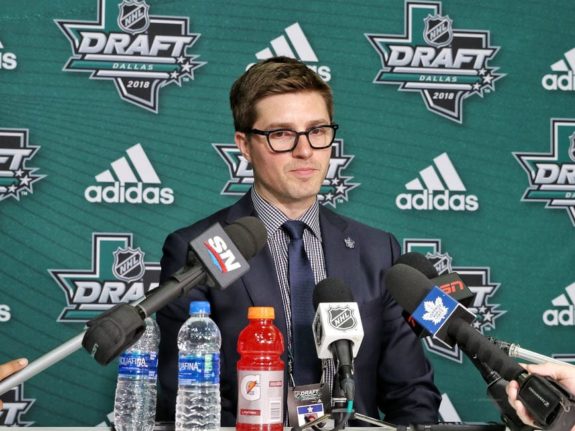Every year, TSN puts out a Trade Bait Board that is followed religiously. Each week that board is updated with the names most likely to move, those who have already been shipped off to a new home and players who climb up and drop down the ladder with regularity.
NHL’ers and fans alike keep an eye on the board all year and if you’re on it, you know, with decent certainty, there’s something to your name being out there.
On Friday, TSN dropped it’s first Trade Bait Board of the season and there are some interesting notes worth looking at:
No. 1: Phil Kessel
It seems like Phil Kessel is a part of trade rumors every year. Despite being a highly-productive forward, he’s rumored to be on the move… again. He’s been traded twice in his career (once from Boston and once from Toronto), so realistically, for a guy who’s talked about so often, he’s been fairly secure in his job.
That seems likely to change this summer.

There are rumors the Pittsburgh Penguins are looking to make changes. A first-round sweep at the hands of the New York Islanders has GM Jim Rutherford guessing as to the makeup of his team and Kessel is a highly-paid player who can fetch a return that might help the Pens move in another direction.
While Evgeni Malkin’s name came up a lot after the Penguins were eliminated, his name isn’t even on the board. As such, you know there’s probably not a whole lot to those Malkin rumors. Kessel, on the other hand, could go.
That he ranks at No. 1 is telling. That there have been rumors of friction between Kessel and the team/coaching staff is even more telling.
Related: NHL Rumors: Spezza, Maple Leafs, More
Some Big Money on the Board
One of the things worth noting is how much money covers the Top 15 spots on the board. Of the 15 players listed, not one makes less than $2.1 million per season and that’s Connor Brown. Closest to him is Travis Hamonic out of Calgary ($3.86) and Colin Miller out of Vegas ($3.88).

The rest of the board is full of big-name, hefty contracts that a lot of teams are trying to move to free up cap space.
The Edmonton Oilers are trying to dump Milan Lucic while the Nashville Predators are thinking about moving P.K. Subban because he’s the highest-paid player on the team and he affects negotiations with other players.
What will be interesting to watch this summer is how teams move contracts like Ryan Callahan or Kevin Shattenkirk. How many of these names will be bought out by their respective teams versus traded for actual value?
Related: Craig MacTavish First of Many Holland Changes
Salary Cap Restructuring
One of the biggest things to notice is how many good teams are rumored to be making moves. This is not a list full of lottery clubs. This is some of the leagues most talented teams being active from the get-go. They’re doing so because they need to make changes to the salary cap situation.

Toronto has two players on the board. One (Zaitsev) frees up big money while the other (Brown) is a luxury they can’t afford. In Nashville, it’s about moving money for money. In Minnesota, the idea is to move players while under control. In Tampa, they want the room to play.
Can Columbus get anything back for Artemi Panarin who is almost guaranteed to be moving on and can Winnipeg finally settle things with Jacob Trouba?
The struggle isn’t just for terrible teams trying to improve. It’s about good teams figuring out what their next steps are in an NHL where the window to win is incredibly small.
Related: NHL Rumors: Marner, Skinner, Short-Term Deals, More
Final Analysis
What’s so interesting about the first Trade Bait Board of the year isn’t that the names on it are on it. It’s why they’re on it.
Every team seems to have a different mandate for the summer and that will make for interesting trades. So too, not all of these players will be traded as some will be bought out and some stay put, simply because there are few options.
How these deals get done will be the thing to watch. It’s not about just moving a player for a player in today’s NHL. It’s about moving the pieces you need to move while the team you’re negotiating with has to figure out their own problems. That makes trades exponentially more difficult.